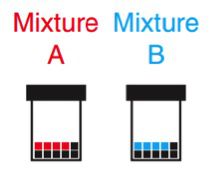Human Sense Of Smell – Better than we think!

This week’s big breakthrough in the world of neuroscience comes from the Rockefeller University in New York. These guys were dissatisfied with what was previously known regarding the capacities of the human olfactory system and decided to investigate.
They tackled a quite obvious question (which nobody had bothered to investigate), how good is the human sense of smell? In their paper published in Science the authors tried to find out how many different smells we can distinguish. There has only been 1 scientific paper ever published on this topic and it dates from 1927, this paper estimated that the human nose can distinguish 6561 different odours. This is not spectacular when we consider that our ear can distinguish roughly 340,000 different tones while our eyes can distinguish around 7.5 million colours!
Amazingly, in this study the authors found that humans can detect around 1 TRILLION different odours, and they further suggest that this number is underestimated!
So what exactly did they do in this study? There were 28 participants, of which two had to be excluded, so 26 overall. The researchers started with 128 odorous molecules which were mixed into groups of 10, 20 or 30 different molecules. During the test, subjects were then presented with 3 vials; two of these vials were exactly the same while the third was different. Subjects had to say which one of the three was different. It was found that if the mixtures of odours overlap by less than 51% then the participants were easily able to distinguish between them, of course the higher the overlap, the more similar the smell and the harder it is to tell them apart.
 In this figure you have 2 vials with different smells. Black squares represent odours in common while coloured squares indicate unique odours. In this case, it should be relatively easy for most people to distinguish that these two vials do not smell the same. (Source Bushdid et al. 2014)
In this figure you have 2 vials with different smells. Black squares represent odours in common while coloured squares indicate unique odours. In this case, it should be relatively easy for most people to distinguish that these two vials do not smell the same. (Source Bushdid et al. 2014)
Using this information the authors calculated (based on their 128 odours molecules from which they make combinations of 30 different odourous molecules) that the human nose can distinguish around 1 trillion different smells, a lot more than the 6561 previously reported. But of course we have no idea of the exact number of odours there are in the world, which makes it difficult to calculate precisely the total number of odours we can possibly encounter.
This is really brilliant work and calls into question previous notions that we as humans are mainly visual animals. If we consider for example the dog, I don’t know many people who would disagree with me if I told them that dogs mainly use their sense of smell and rely less on their vision to discover the world around them. In the same way, most people (myself included) believe that the primary human sense is sight. We mainly rely on our eyes to discover our environment, as well as using our sense of hearing, touch, taste and smell.
For me this study really bring this fact into question. I’m not saying that we should completely change our beliefs, humans remain mainly visual animals, but we have perhaps neglected the importance of our sense of smell (If you’re not convinced go back and read the interview with Edgar Soria – Cannabis gives you the munchies by increasing your sense of smell).
There has been a lot of work carried out into whether we are capable of detecting pheromones, and the question is still wide open. However, we have perhaps grossly underestimated the importance of smell in our daily lives. This is a potential marketing gold mine waiting to be exploited.
Here you can see the final figure from the paper, comparing our how well we can distinguish different smells (top), colours (middle) and sounds (bottom). You can see that our sense of smell is actually a lot more sensitive than what was previously believed. Mixtures of 10, 20 and 30 refer to mixtures of 10, 20 or 30 different odour molecules, thereby increasing the complexity of the smell (Source: Bushdid et al. 2014).

